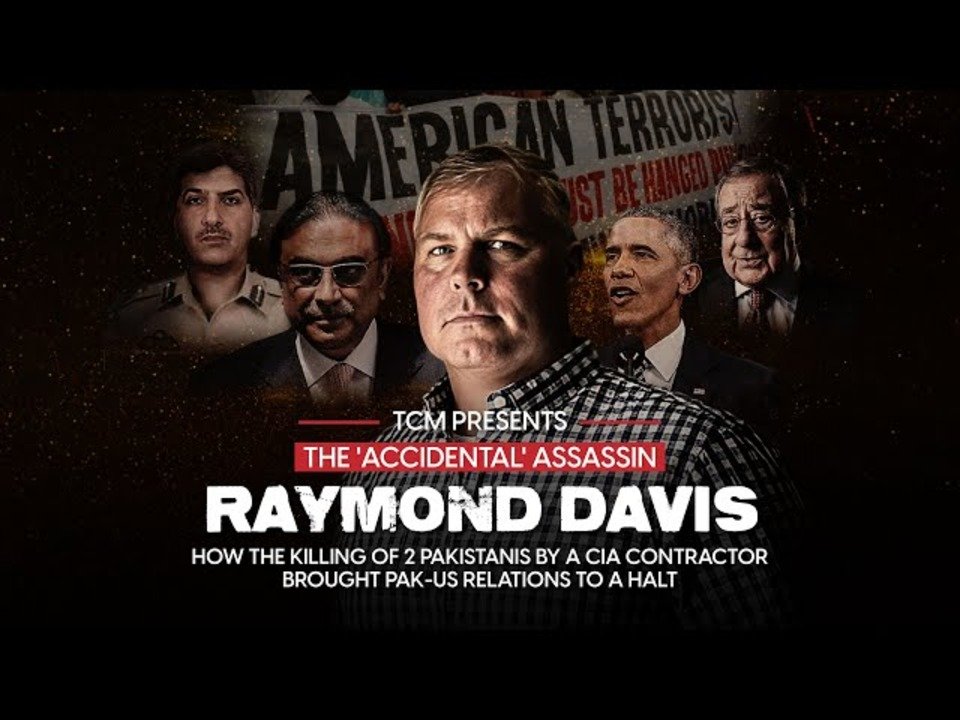Raymond Davis Case: CIA Contractor who shot two Pakistanis
The Raymond Davis case is one of the most significant “diplomatic storms” that tests the real strength of ties between Pakistan and the United States. This case came into being when American national Raymond shot dead two Pakistanis on a busy road in Lahore.
This shooting incident happened on January 27, 2011, which raised many questions and concerns. Who was Raymond Davis? What did he do in Pakistan? Why did he shoot Pakistani citizens?

Who was Raymond Davis?
Raymond Allen Davis is a former US Army soldier, private security company employee, and contractor with the Central Intelligence Agency (CIA). However, his presence in Pakistan became suspicious and more controversial with the shooting incident.
The Pakistani and US government could not reach an agreement on his legal status in Pakistan at the time of this incident. The US government claimed that Raymond was a diplomat but Punjab authorities (the province in which the shooting happened) claimed that he was on an official business visa rather than a diplomatic visa.
However, the arrest of Raymond by Pakistani authorities in the aftermath of a shooting incident made this case more controversial and suspicious.

Raymond Davis Incident
Raymond was reportedly coming from his residence at Scotch Corner, Upper Mall Lahore. He was driving alone in his white Honda Civic after getting cash from an ATM bank.
He stopped at a red signal near Qurtaba Chowk in Mozang Chungi when two guys on motorcycles pulled up next to him. Afterward, he shot both of the young men with his own 9mm Glock pistol.
The two dead guys were identified as 26-year-old Muhammad Faheem Shamshad and 22-year-old Faizan Haider. Following the shooting, Davis radioed his allies for help.

A few minutes later, four guys in a Toyota Land Cruiser with fake license plates tried to reach the crime scene. But they failed to access Raymond due to a traffic jam.
However, they crossed the center line on Jail Road going in an opposite direction to reach the incident place as soon as possible. Meanwhile, the Land Cruiser hit a motorcyclist who had nothing to do with the shooting incident. The motorcyclist victim was Ibad-ur-Rehman.
Ibad-ur-Rehman and Faheem Shehzad (victim of shooting incident) died after being taken to Services Hospital in Lahore. However, Faizan Haider died on the spot.
After the accident, the Land Cruiser left the scene and drove straight to the US Embassy. It left belongings outside Faletti’s Hotel Lahore.
On the other hand, Raymond also tried to escape but two traffic wardens caught him at Anarkali Bazaar’s Old Anarkali Food Street and handed over him to the Police.
This incident outraged Pakistanis for shooting their citizens in daylight in the public eye. Hence, it caused widespread protest series for severe punishment against him. Meanwhile, the arrest of Raymond by the Punjab Police caused extreme tensions between the US and Pakistan.

Police Investigation and Raymond Claims
Raymond claimed to shoot Faheem and Faizan in self-defense during police interrogation while in custody. He stated:
Two dead guys were carrying a weapon and he shot when one of them allegedly pulled out a gun. They were trying to rob me.
Raymond Davis
However, the police could not find any witnesses to verify his claim. The investigating officers claim that Faizan and Faheem were on bikes in front of Raymond’s car with their backs to him when he opened four to five fire rounds on them.
Raymond fired at them through his car’s windshield. After the shooting, he reportedly came out of his car to use his cellphone to snap images and videos of the dead victims.

Police also found a Glock handgun, an infrared light, a portable telescope, a GPS hear, two cellphones, a satellite phone, and a 9mm gun. Several ATM and military identity cards, a facial mask, and a camera with pictures of prohibited areas such as installations along the border with India were found in his car.
These findings raised further suspicions about the activities of Raymond in Pakistan. It was also reported that Rayomond had IDs from US embassies in Lahore and Peshawar, but not from the US embassy in Islamabad.

Aftermath and Mystery of Raymond Davis
Following the incident, some Pakistani authorities reported to ABC News that they suspected Raymon of spying and having crossed a “red line” by killing two individuals.
They reported that both victims worked for the Inter-Services Intelligence (ISI) of Pakistan. However, those authorities did not reveal their identity.
According to Express Tribune, a Pakistani security officer who asked not to be named because he had no permission to speak to the media. He revealed the dead victims were ISI agents.

The victims were reportedly following to scare him since he visited the Federally Administered Tribal Areas (FATA). Raymond had interacted with some people in FATA without the consent of ISI.
According to another anonymous ISI official, Raymond knew both dead victims he shot and had links in FATA areas near the border between Afghanistan and Pakistan. He also said:
ISI will look into the possibility that the incident on the streets of Lahore was the result of his FATA meeting or threats against him.
Anonymous ISI official
Diplomatic Chaos
The Lahore shooting incident at the hands of Rayomd caused a diplomatic storm and made things worse between the US and Pakistan. One of the main trigger points of this incident was the claim of the US government.
That claim was Raymond had diplomatic immunity being their official diplomat because he worked as an “administrative and technical official” at the American embassy in Lahore. Hence, the US claimed Raymond had protection under the Vienna Convention on Diplomatic Relations. They urged Pakistan to release him.

Barack Obama was the US President at that time who asked Pakistan not to prosecute Raymond and to recognize him as a diplomat. He stated:
There is a broader principle at stake that he thinks they have to uphold.
Barack Obama, Former US President
However, Pakistani officials neither believed the claim of the US nor Raymond that he was not guilty of murder. Then-Pakistani Foreign Minister Shah Mehmood Qureshi said:
Raymond Davis is not a diplomat. Hence, they cannot give him diplomatic immunity.
Shah Mehmood Qureshi, Former Foreign Minister of Pakistan
However, Shah Mehmood could not prove his bold stance. So, it cost him his job as Foreign Affairs Minister in Feb 2011. After eight months, he parted ways with PPP due to this case aftermath in Nov 2011. He said:
He did not quit as Foreign Minsiter because authorities forced him to grant diplomatic protection to Raymond Davis.
Shah Mehmood Qureshi, Former Foreign Minister of Pakistan

US Pressure and Release of Raymond Davis
The United States imposed sufficient pressure on the Pakistani government to release Raymond. According to media reports, the US State Department cut its relationships with the Pakistani Embassy in Washington due to the Raymond Davis Case.
The US government wrote to Pakistan’s Foreign Office demanding to grant Davis diplomatic immunity. A US House Committee on Armed Services delegation reportedly threatened to end defense cooperation between the US and Pakistan.
Hence, following world superpower country pressure, Raymond was released on March 16, 2011. Pakistani officials released him after payment of $2.4 million in diyya to families of dead victims. Diyya refers to a settlement known as blood money in Islamic law.
Before the release of Raymond, Shumaila Kanwal, wife of Faheem; committed suicide on Feb 6, 2011. She killed herself in fear of the release of her husband’s killer without facing charges.

Conclusion
The Raymond Davis case showed how fragile US-Pakistan relations are and how complicated it is for diplomatic immunity, spying suspicions, and international law to work together.
Raymond’s freedom at the cost of blood money did not do much to ease the tensions that were in the first place. It had a long impact on the relationship between both countries.
Share this content:




Post Comment